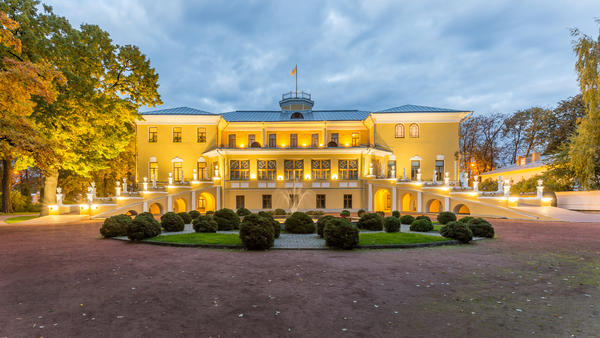The Yaroslavl Art Museum was founded in 1919. Nowadays, it houses over eighty thousand items representing Russian, European, and Eastern art.
The exhibition is displayed in several historic buildings in the center of Yaroslavl.
In 1909, an artistic society was formed in Yaroslavl to bring together local artists and historians. Its activists promoted cultural education by delivering lectures, organizing exhibitions, and publishing albums.
Between 1919 and 1936, the museum was known as an art gallery. In 1937, it was awarded the title of a regional museum of art. In 1969, it was renamed the Yaroslavl Art Museum as it is known nowadays.
The museum features a variety of collections in such areas as painting (including the largest collection of Konstantin Korovin’s later works), sculpture, drawing, decorative and applied arts, and numismatics.
The museum also houses ancient cast products, wooden items (carvings and sculptures), and items of applied arts related to Christianity. The vast collection of icons includes unique items, including signed works by the famous painters Semyon Kholmogorets, Fyodor Zubov, and Gury Nikitin.
The museum often hosts concerts and exhibitions.
The exhibition is displayed in several historic buildings in the center of Yaroslavl.
In 1909, an artistic society was formed in Yaroslavl to bring together local artists and historians. Its activists promoted cultural education by delivering lectures, organizing exhibitions, and publishing albums.
Between 1919 and 1936, the museum was known as an art gallery. In 1937, it was awarded the title of a regional museum of art. In 1969, it was renamed the Yaroslavl Art Museum as it is known nowadays.
The museum features a variety of collections in such areas as painting (including the largest collection of Konstantin Korovin’s later works), sculpture, drawing, decorative and applied arts, and numismatics.
The museum also houses ancient cast products, wooden items (carvings and sculptures), and items of applied arts related to Christianity. The vast collection of icons includes unique items, including signed works by the famous painters Semyon Kholmogorets, Fyodor Zubov, and Gury Nikitin.
The museum often hosts concerts and exhibitions.

